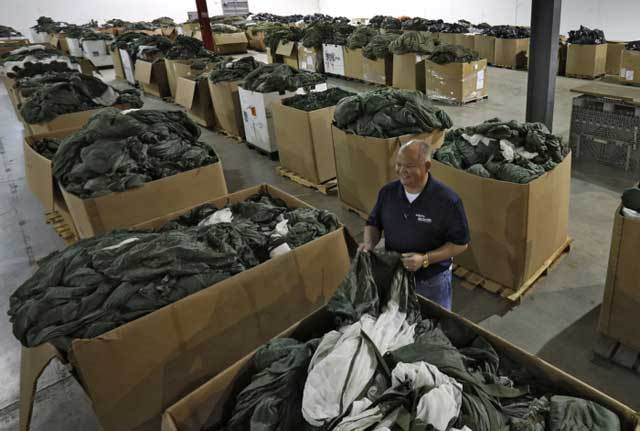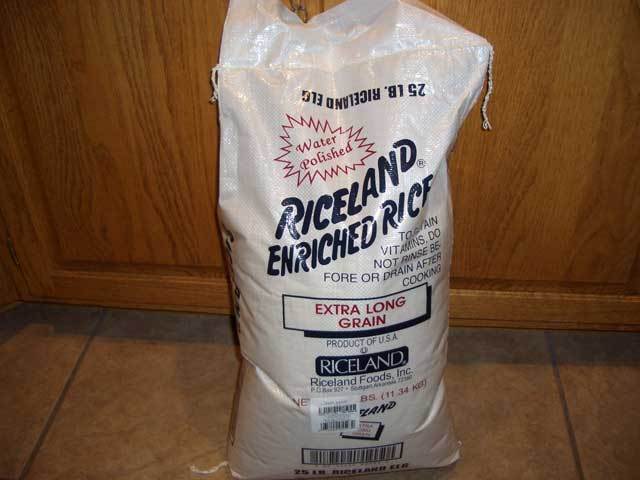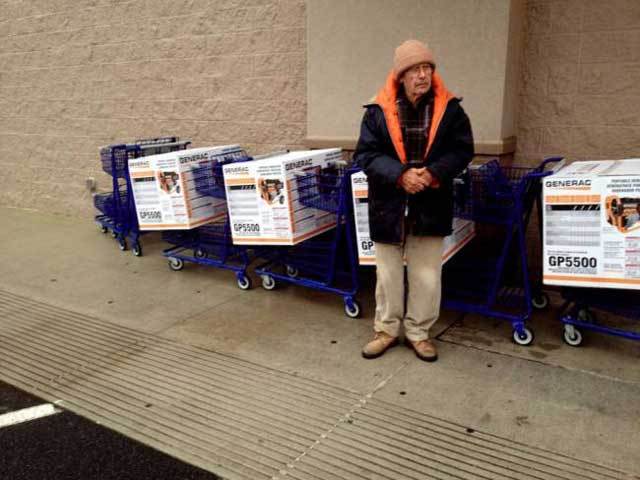Prepping on a Budget
One excuse that some people use for not beginning to prepare for disasters is the cost. They look at shows like Doomsday Preppers or view the advertisements on prepping or survival blogs and start mentally calculating the costs of everything they need in their head. When you look at Prepping or being prepared as a destination it is easy to see why this thought looms in the minds of people everywhere.
It doesn’t have to be that way.
I have said it many times before that Prepping is a lifestyle. Prepping is never something you can finish and for most of us we will never be as prepared as we like, but by taking slow, steady steps towards your goals you will be more prepared today than you were the last month. When you look back years from now you might be amazed at what you were able to accomplish.
Now after saying all of that, I will readily admit that prepping in many areas involves some financial commitment. The trick is to acquire prepping supplies as your financial resources allow, don’t break the bank, but save money at every opportunity. Today I wanted to share a couple of ideas I have used personally to save money. When you are prepping on a budget, you want to put a good bit more thought and research into purchases but this should save you some money in the long run.
Determine what you need to spend more money on
There are some items that basically do the same thing, but depending on who makes the item, the cost could be dramatically different. You could purchase an Audi or you could purchase a Ford. They will both do the job of getting you where you want to go in relative comfort, safety and dependability, but one car could be twice as much as another. Yes, the Audi might have different amenities, aesthetics and niceties. It is probably engineered better and will overall be a better investment, but you chose to spend more for one.
It is similar in some respects to many of the items we look at as necessary for prepping. We know we need a certain item and begin shopping, reading reviews or scouring the comments on prepping blogs for the perfect item. Many times this will lead you to an item that while very good, is not significantly better at doing the job you will require of it to warrant spending twice as much. Knives are perfect examples of this concept and firearms usually get into this territory as well.
Before anyone gets on to me, I firmly believe in the concept of you get what you pay for. I don’t advocate buying the cheapest thing you can find in all circumstances but sometimes, you just don’t need to buy the Audi when the Ford will be perfectly fine. Consumables are where I first looking at cutting cost. Disposable paper products, lighters, matches and toilet paper are easy targets. Dollar stores are great for some items but not everything. Yard sales are excellent bargains too if you have the discipline and can find the right deals. I have a friend who has some special power for finding ridiculous deals like a crossbow in a case with arrows for $50. About all I can find is books.
Something like a knife involves a little more research, but you can easily compare products on sites like Amazon.com. Should you spend $155 for a Cold Steel Espada with polished G10 handle knife or would something closer to the $24 Gerber Warrant Knife do just as well for saving your butt in a survival scenario? I know there is a case to be made for spending money on collectables or what you “must have” because it makes your soul smile, but we are talking about saving money here.

Military Surplus stores can be a good source of deals on some of your prepping supplies.
Purchase used items
Another good way to count pennies if you are prepping on a budget is to buy gently used items. Not every piece of prepping gear you get needs to be brand new for it to be perfectly suited to what you need and this almost always will cost you less than full price. One place to get some items used would be Ebay, military surplus stores and Craigslist. I wouldn’t get underwear or anything like that, but I have purchased used military sleeping bag systems and saved hundreds of dollars. You can shop for backpacks and other camping gear in the off-season (right now) that people are looking to get rid of because they got new equipment for Christmas.
Firearms are usually just as good when they are used as brand new, but you likely won’t save too much money going this route because firearms don’t typically lose their value. You could save$50 to $100 though if you shop around. Pawn shops and gun shows are two great places to legally purchase used firearms and save some money.

Buying rice in bulk is a huge cost savings.
Buy in bulk
Food is one of the first things that preppers stock up on and it makes sense because we all need food, pretty much every day but you can save money by purchasing in bulk. There are a few good candidates for this method, but Rice, Beans and Whole Wheat come to mind. Instead of buying the small bags of rice, you can buy a 50 pound bag of rice for about $20. This one bag provides 504 servings of rice. To keep it fresh, you can store it in sealed Mylar bags. You can also bulk purchase Salt, #10 cans of fruit and veggies and toilet paper if you have a Sam’s or Costco membership.
Another thing to buy in bulk is ammo because you can usually get a better rate if you purchase 1000 or 500 rounds at a time as opposed to a single box of 50. Freeze dried food in bulk supplies of 3 or 6 months will save you money and cut down on the number of trips the UPS man has to make to your door. Yes, these purchases cost more out of pocket, but it could actually save you money to wait until you have the funds for that bulk purchase. Naturally this assumes you have some supply at your disposal while you are saving.

Don’t buy during a panic
Do you know when the absolute worst time to buy a generator is? Immediately after a disaster. I have heard stories of the cost of generators doubling after a flood, tornado or other crisis and that is simply because the demand goes through the roof. Resist the urge to buy anything prepping related like this in the aftermath of a disaster unless it is absolutely necessary.
A good strategy is to wait until everyone who bought these generators are selling them 6 months down the road because they don’t believe they will ever need them again. Along with items like generators, food supplies are lower during a disaster as well. You don’t want to be running to the store when everyone else is.
One good thing you can do is to create a list of all the prepping supplies you think you need and prioritize the items in that list. Once you have them in priority order, you can be more selective about what you purchase and when. Take some time to shop around. The internet is a great tool for comparison shopping and you can easily see who has the lowest prices on items. With a little forethought you can strategically make purchases and save money.
What ideas do you have for prepping on a budget?
One excuse that some people use for not beginning to prepare for disasters is the cost. They look at shows like Doomsday Preppers or view the advertisements on prepping or


